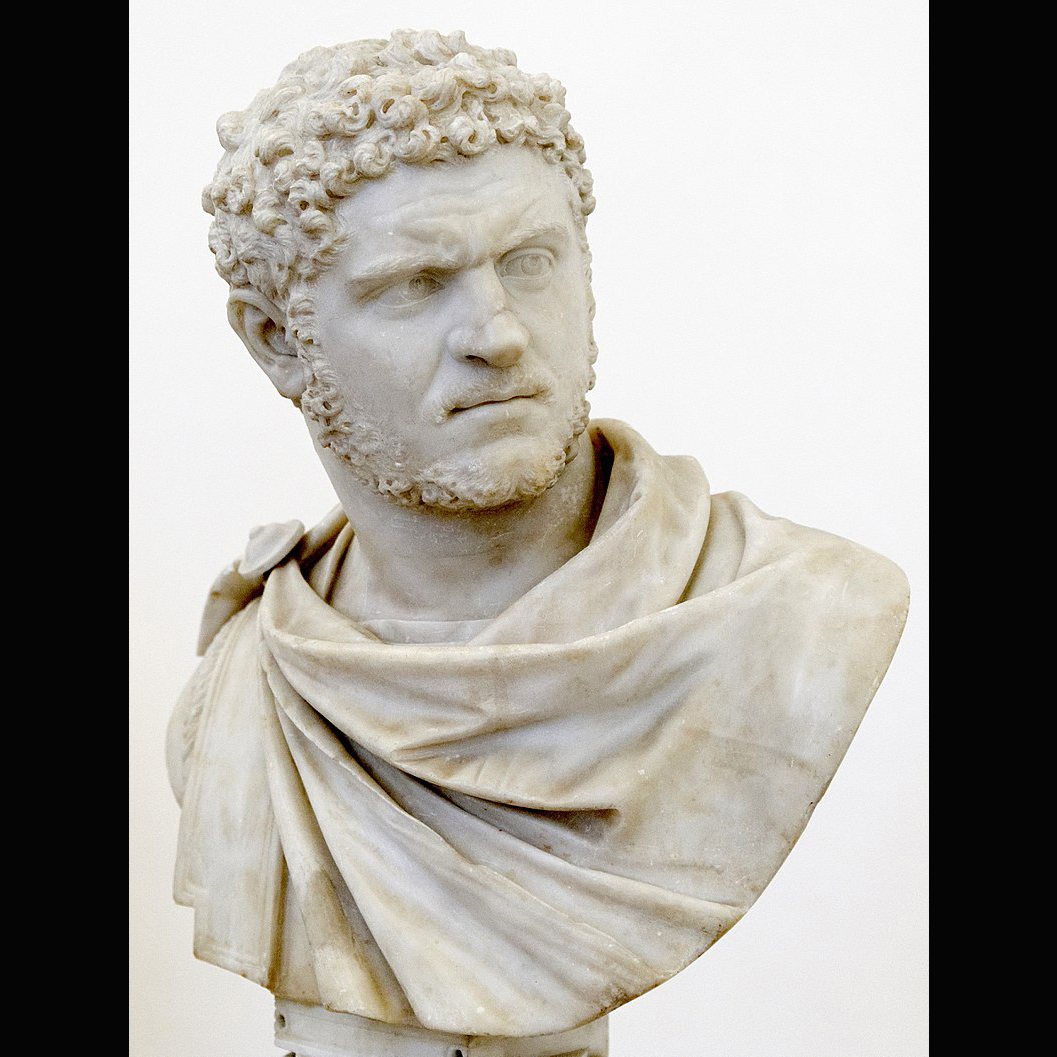Caracalla (AD 198-217). AR denarius (19mm, 3.08 gm, 6h). NGC MS 5/5 - 3/5. Rome, ca. AD 210-213. ANTONINVS PIVS AVG BRIT, laureate head of Caracalla right / MONETA AVG, Moneta standing facing, head left, scales in right hand, cornucopia in left. RIC IV.I 236.

Caracalla (/ˌkʌrəˈkʌlə/ 4 April 188 – 8 April 217), formally known as Marcus Aurelius Antoninus, was Roman emperor from 198 to 217. He was a member of the Severan dynasty, the elder son of Septimius Severus and Julia Domna. Proclaimed co-ruler by his father at age 10, he continued to reign with his brother Geta, co-emperor from 209, after their father's death in 211. His brother was murdered by the Praetorian Guard later that year, supposedly under orders from Caracalla himself, who then reigned afterwards as sole ruler of the Roman Empire. He found administration to be mundane, leaving those responsibilities to his mother, Julia Domna. Caracalla's reign featured domestic instability and external invasions by the Germanic peoples.
Caracalla's reign became notable for the Antonine Constitution (Latin: Constitutio Antoniniana), also known as the Edict of Caracalla, which granted Roman citizenship to all free men throughout the Roman Empire. The edict gave all the enfranchised men Caracalla's adopted praenomen and nomen: "Marcus Aurelius". Domestically, Caracalla became known for the construction of the Baths of Caracalla, which became the second-largest baths in Rome; for the introduction of a new Roman currency named the antoninianus, a sort of double denarius; and for the massacres he ordered, both in Rome and elsewhere in the empire. In 216, Caracalla began a campaign against the Parthian Empire. He did not see this campaign through to completion due to his assassination by a disaffected soldier in 217. Macrinus succeeded him as emperor three days later.
The ancient sources portray Caracalla as a tyrant and as a cruel leader, an image that has survived into modernity. Cassius Dio (c. 155 – c. 235) and Herodian (c. 170 – c. 240) present Caracalla as a soldier first and an emperor second. In the 12th century, Geoffrey of Monmouth started the legend of Caracalla's role as the king of Britain. Later, in the 18th century, the works of French painters revived images of Caracalla due to apparent parallels between Caracalla's tyranny and that ascribed to Louis XVI of France (r. 1774–1792). Modern works continue to portray Caracalla as an evil ruler, painting him as one of the most tyrannical of all Roman emperors.











